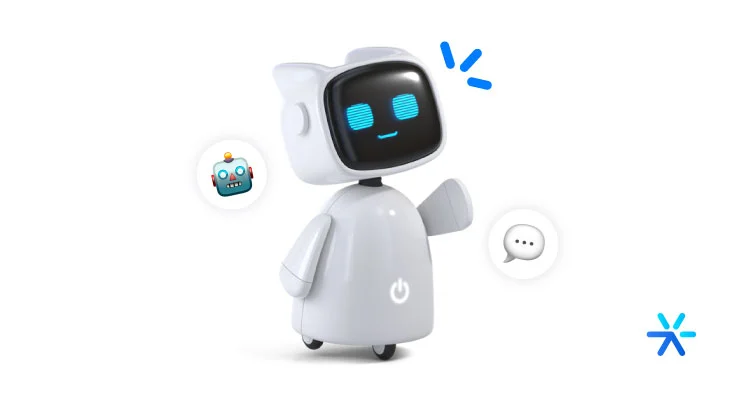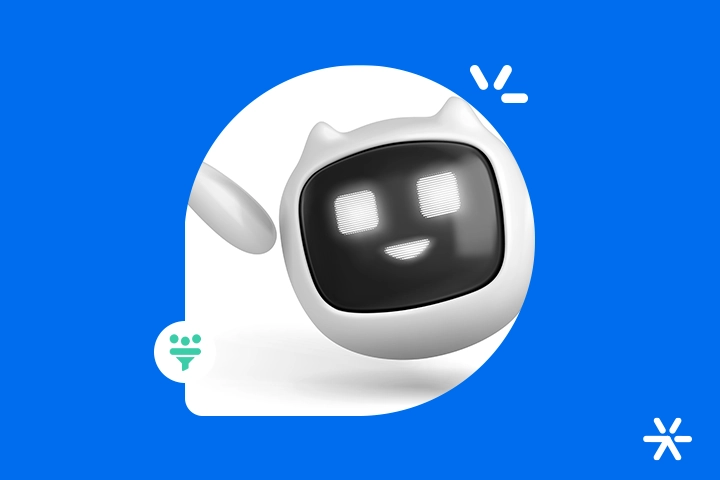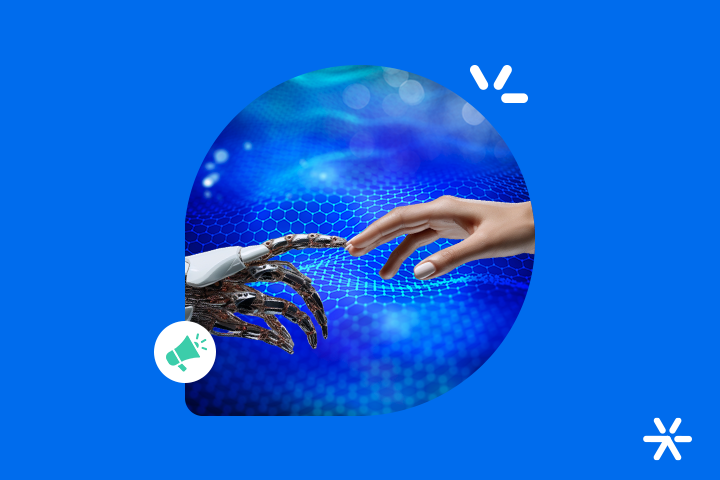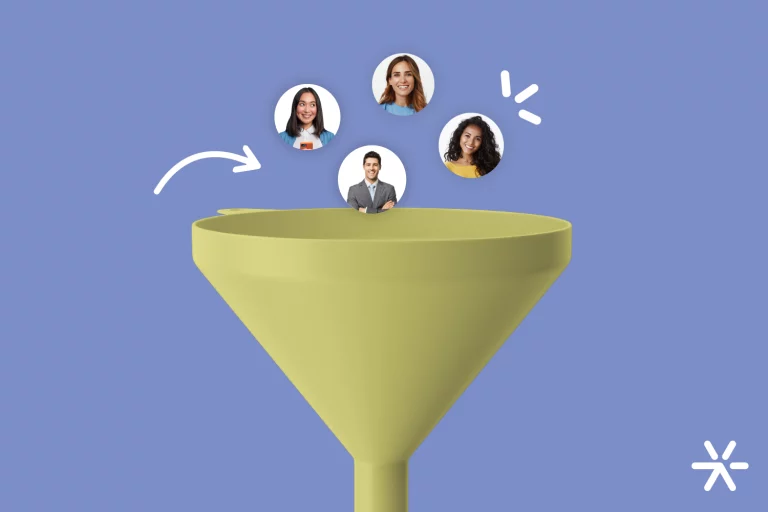Conversational Marketing: 7 Strats and 4 Stats
It’s high time to consider conversational marketing strategies in your actions.
A few years ago, the concept was trending, but today it is already necessary.
Conversational marketing has a broad scope, contrasting with its configuration and adoption, which are quite simple.
Including lead generation.
This last part, by the way, is still underutilized by many companies in conversational marketing strategies.
In this article, I will show you exactly how the relationship between leads and conversational marketing works, in addition to clarifying the concept a little more.
What is conversational marketing?

Conversational marketing is a type of marketing related to interaction.
If a person can converse with a marketing action, no matter how small, we are talking about conversational marketing.
For example: you enter a company’s website, and there is no site—just a screen with a chatbot that guides you according to your interests.
Or an even better example: you enter a landing page to download some material, and instead of a static form, you find a chatbot.
Other practical examples of conversational marketing include:
- Chatbot supporting site navigation;
- WhatsApp button with pre-qualification via WhatsApp;
- Complete landing pages;
- Responding to DMs on social media;
- Among others.
What are the advantages of conversational marketing?
The greatest advantage of conversational marketing strategies is the ability to create personalized approaches in your actions and on your site.
Personalized approaches alone have the potential to greatly increase your conversions.
A study by HubSpot showed that personalized CTAs increase the conversion rate by up to 202%.
But conversational marketing is not just free conversation.
In fact, this personalization is done through audience segmentation and flows, something simple for your analysts to configure.
Because of this, the greatest advantages of conversational marketing strategies are precisely the possibility of personalizing approaches in a simple and quick way to apply.
🤿 Dive deeper: Why Conversational Marketing is a Necessity in 2024
What is a chatbot?

A chatbot is the most popular conversational marketing tool on the market.
Usually, when anyone mentions this type of marketing, they are referring to the use of chatbots.
A chatbot is a platform installed on your website that allows you to provide quick assistance, guide people to pages and categories, make material available, etc.
The personalized approach according to the subject, closer to the user, ends up bringing greater identification and more chances of converting the visitor into a lead.
🔎 Also read: Intelligent Virtual Assistants and Chatbots: What’s the Difference?
10 conversational marketing strategies to use in 2024
So far, we’ve been talking about the reasons to use conversational marketing on your site, right?
The biggest one, for sure, is the increase in lead conversion.
The data we have from our clients who use Leadster actively, every day, show an increase of up to 3x in the number of leads.
But what exactly are these people doing to achieve such results?
What are the best conversational marketing strategies for 2024?
That’s what we’re going to talk about now.
Check out this list with 10 suggestions for actions and adjustments on your site.
Data points for nurturing flows
Data-driven marketing requires many data points, many data inputs so that the strategy is always the best possible.
An integrated chatbot with your CRM offers important behavioral variables on your site.
You can create nurturing flows related to how visitors interacted with your chatbot.
For example: someone enters your site and starts a conversation with your chatbot.
Suppose this visitor entered this article and was redirected to the Leadster test page.
They registered but never used your free test.
It’s hard to know what happened to this visitor, their reasons for signing up for the test but never using it.
But at least this behavior is “recorded” – and from it, you can create a personalized nurturing flow for your lead.

Service roulette
What if your team has 5 people working at the same time? Will all 5 need to respond on the same number?
This creates a mess, and mess means lost time and, consequently, money.
Leadster’s chatbot has the WhatsApp Service Roulette functionality, allowing up to 12 numbers to be registered in it.
In this functionality, each contact is directed in order to this roulette.
Dwight receives a contact, then Pam, then Jim, and so on until it returns to Diwght.
Form replacement
Forms are less efficient than chatbots in converting leads.
The format is outdated, the personalization is minimal, and the bureaucracy ends up scaring many people away.
All your landing pages can have, instead of forms, chatbots with a personalized approach for each material.
This increases conversion and the identification of your lead with your brand.
Lead generation anywhere on the site
A chatbot, as you’ve seen so far, is a fundamental part of your lead generation strategy.
It is an active tool in your capture.
For a long time, lead generation worked more passively.
You rank well for your site organically, or run some ads on Google and social networks, and the leads end up landing on a page optimized for conversion.
On this page, there will be CTAs, leading to a form where the visitor becomes a lead by leaving their information.
Do you notice the path the visitor takes?
They need to land on specific pages to convert.
Usually, your blog or an optimized landing page.
What the chatbot does is expand this opportunity to your entire site.
In any category, including the home, it is possible to generate leads.
And even on the blog, conversion can happen while they are researching.
With a chatbot, the conversion opportunity follows the reader while they do their research.
Simple and instant lead qualification
Lead qualification today happens mainly through forms. And forms are the worst way to generate and qualify leads.
You can even conduct surveys via chatbot.
The commands and keywords you can configure can qualify any lead in a fun way that does not involve huge forms.
Including pre-qualification, as mentioned with the WhatsApp button. Imagine receiving all your communications with name, email, and company identification?
And speaking of which:
Audience segmentation for specific service
A great conversational marketing strategy is sending leads to WhatsApp, as we mentioned throughout the article.
But this comes with difficulties.
Who will serve whom?
In a sales team, it is common for each person to “take care” of a different segment, or a different product, or even a different region.
The chatbot allows you to do this quick qualification and send the contact directly to the responsible salesperson or department.
Conversational homepage
Have you ever imagined a website where the homepage is a chatbot?
This is one of the boldest conversational marketing strategies, but some brands have already tested it and certify that this is a genuine way to capture visitors’ attention and guide them.
After all, what’s the homepage for if not to direct visitors and guide them within the website?
Another interesting way to apply this is to mix content from your site with the conversational approach.
After-sales strategies
In addition to generating leads, the chatbot can also help in qualifying and retaining your current customer base.
With post-sales flows, you have an after-sales service that values the customer, providing experiences that create promoters.
You can send satisfaction surveys, check how was their experience, and suggest content to improve their perception of your brand and the experience itself.
5 Statistics That Prove Conversational Marketing is the Future

So, what did you think of these conversational marketing strategies for 2023?
I understand that most of your reservations about the topic are not related to the effectiveness of the chatbot.
In these 7 strategies, we have practically shown that it works.
The problem is their longevity, right?
How to know if chatbot strategies will continue to be relevant in the future?
How to ensure investment in the tool?
That’s why I brought statistics about conversational marketing strategies that address this.
Here are a few:
23% of Consumer Service Companies Use Chatbots
According to a survey by Salesforce, 23% of all companies focused on consumer service—i.e., B2C—actively use chatbots on their websites.
This number will increase even more as user expectations are met by technological advancements.
And speaking of these expectations:
68% of People Prefer the Speed of Chatbots
In a 2022 survey, the website Userlike determined that 68% of people prefer chatbots due to their speed of service.
And although the statistic is favorable to chatbots, it is by no means a novelty.
Think about yourself: what do you prefer?
Immediate service that can be resolved in 2 minutes or service only on weekdays, during business hours, with delays?
33% of Users Consider Chatbots “Very Efficient”
In a survey by Statista, 33% of users consider chatbot service to be “very efficient.”
And the best part is that 54% of the people interviewed said chatbots are “efficient,” with only 13% saying they are completely inefficient.
With this, we can say that 87% of the people interviewed see chatbots as efficient.
Score for conversational marketing strategies!
Chatbots Handle a Complete Conversation 69% of the Time
Another prejudice debunked.
Many people think chatbots will never be able to complete a conversation or meet a specific user request.
But the statistics say otherwise.
According to a 2022 survey by Comm100, 69% of the time, chatbots can fully resolve the visitor’s request without needing to involve human attendants.
In the end, it’s as if people don’t care whether the service is done by chatbots or humans: the important thing is to solve the problem.
But this is a supposition.
Is there a study that proves this?
40% of People Don’t Care if the Service is Via Chatbot or Human
A survey by HubSpot determined that 40% of people don’t care whether the service is done by humans or a chatbot—the important thing is to resolve the issue.
And another equally interesting survey determined that 63% of people don’t know or care if their service is done by a human.
Convenience is the soul of business!
As long as everything is working and going well for your client, visitor, or lead, they will use the channels you provide—whether it’s a human or a robot. 🤖
Before finishing this article, I need to make one point very clear: chatbots do not exist to replace human service.
They operate in very different areas.
Once again, see the example of the WhatsApp button: a chatbot helps you qualify your leads so that the salespeople can work better.
This is the great triumph of technology—to help humans fully explore their talent.
And this talent is irreplaceable.
All these conversational marketing strategies are simple to put into practice.
In fact, you can apply them today.
Take a free Leadster test and see what you can do 😉
Thanks for reading and see you in the next article 🚀








